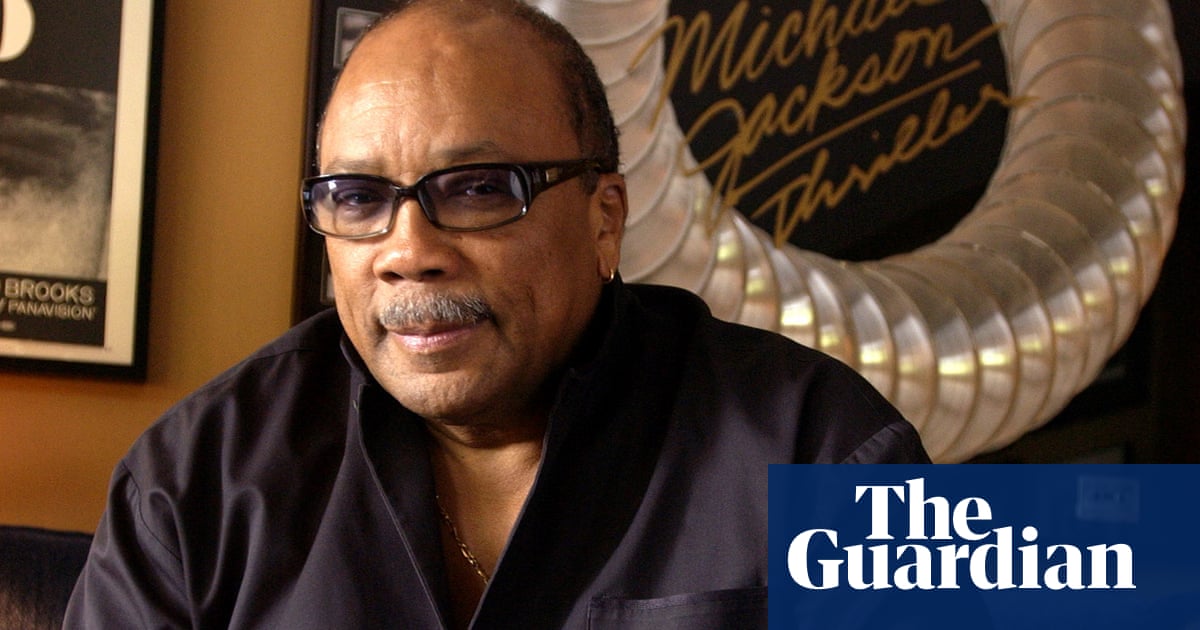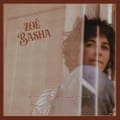
Michael Jackson – Thriller
For all Quincy Jones’s astonishing versatility, straddling the analogue warmth of big band jazz and the sleek production of the early-digital 80s, there is one work that towers over them all: Thriller, the biggest-selling album of all time.
On its title track, Jones brings a half-century of music to bear on its lavish, theatrical, yet still funky arrangement: it is like something from the music hall or vaudeville days, scaled up for the maximalist 80s. The brass fanfares carry the song and Jones stuffs the rest, like a Hollywood film with budget to burn on extras, with everything from camp storytelling flourishes such as the wolf howls to deft jazz detailing. Check that little organ flourish just before Jackson starts singing, or the freewheeling funk-guitar melody low in the mix in the chorus.
Donna Summer – State of Independence
A great music producer needs directorial vision – something that came naturally to Jones since his time as an orchestral conductor – as well as technological nous and an impresario’s eye and ear for talent. All these qualities cohered spectacularly on State of Independence, a cover of a sort of cosmic reggae song by Vangelis and Yes’s Jon Anderson, with Jones spotting the potential to punch it up to the pop charts by adding harder drums. He also rinsed his Rolodex to bring together the backing choir of dreams, featuring Jackson, Lionel Richie, Dionne Warwick, Stevie Wonder and around a dozen more stars.
Quincy Jones – Ai No Corrida
Jones’s nose for a hit was even more sharply attuned here. He sniffed out gold in an unfairly flopped single by Chaz Jankel, a member of Ian Dury’s Blockheads who had struck out for solo glory with an eight-minute funk-pop song inspired by the violent erotic infatuations explored in Nagisa Oshima’s film In the Realm of the Senses – admittedly not the most obviously crowdpleasing fare. The madness of Jankel’s spirited original is admittedly tamped down by Jones, but his snappy sophistication provides its own pleasures – and ensured it was, finally, a hit.
Helen Merrill – Don’t Explain
Recorded just before Christmas in 1954, this song is like the first flakes of snow dotting a window pane: sparse, beautiful, melancholy and charged with wonder. Jones was in his early 20s when he arranged and conducted this recording of jazz singer Merrill, and already working magic as he makes what is actually quite a rich instrumental array – electric guitar, flute, piano, double bass, trumpet, drums, plus Merrill’s vocal – feel minimalist.
George Benson – Give Me the Night
A funk machine working with almost fiendish perfection, the rhythm track to Benson’s 1980 US Top 5 hit seems to have discovered the secret to perpetual motion. Jones’s genius was to use a surprisingly gentle, perfectly steady four-on-the-floor beat, then make everything else funky: bass, guitar, Benson’s elastic vocals. There’s that jazz scholarship again, too, in the joyously silly backing vocals from scat-singing Patti Austin. (From the same year, the Brothers Johnson’s Jones-produced hit Stomp! makes a joyous companion piece.)
Quincy Jones – Desafinado
It started out as a soft and subtle bossa nova song by Antônio Carlos Jobim, then got taken up a gear by Stan Getz and Charlie Byrd in their popular samba-fied 1962 recording. Jones then gave it an even bigger jolt of joie de vivre in his big band version – his ear well attuned to the swing of Brazilian rhythm even while he lent the tune a tangibly American brashness and confidence (some might say arrogance). He hired some very hip personnel, too, with Lalo Schifrin on piano and Rahsaan Roland Kirk providing some chirruping flute lines.
Lesley Gore – It’s My Party
Gore’s situation is already awful enough on the page: she can’t work out where her boyfriend Johnny has gone, but it doesn’t look good given that some dame called Jane is also absent. Soon enough they both waltz back into the party with a ring on Jane’s finger and Jones makes it actively horrifying, the party still in full swing around the singer’s escalating meltdown, with trumpets peppily parping in insensitive major keys and backing vocalists forming a choir of bullies (“Johnny has gooooone, ooooh…”). A masterpiece of theatrical pop that rightly entered the cultural lexicon.
Quincy Jones – I’m Gonna Miss You in the Morning
From 1978’s fantastic but terribly titled album Sounds … and Stuff Like That!, this affords you the considerable pleasure of hearing Luther Vandross sing over peak Jones production that folds the sequins of the disco era into the cashmere of the R&B slow jam. The synth solo, while very much a product of its time, adds a jazz pedigree that few other songs of this type ever had, and Patti Austin’s chorus is sturdy yet euphoric songcraft.
Sarah Vaughan – It Could Happen To You
Disney-grade wonderment emanates from this recording of the vocal jazz standard, backed by the toothsome Svend Saaby Danish Choir and sumptuous orchestration, all of it actually serving to further ironise the lyrics which are a warning to hopeless romantics about self-preservation. The arrangements here are by the Canadian composer-conductor Robert Farnon, who inspired Jones to speak so eloquently about the craft of production and music-making: “Farnon enveloped [Vaughan] with the velvet of affection and respect. She responded in kind; the instrumentalists and choir were also caught up in this reciprocal flow of love – the love of a musician for a challenge that will enable him to utilise all the skills he has, to their maximum extent.”
James Ingram and Michael McDonald – Yah Mo B There
Jones was 50 years old when this was released in 1983 but had embraced digital technology with the zeal of someone half his age. He permits himself some of the gigantic drum-machine fills that powered so much of the decade’s epic pop, but keeps things relatively restrained, putting his faith in Ingram and McDonald’s vocal strengths. Even so, jazz, funk or disco purists might have felt Jones had gone too far into 80s slickness – at first listen we’re a long way from Helen Merrill. And yet in many ways we’re not, with Jones’s production and arrangements remaining just as masterly and poetic. Listen to the way a digital synth imitates choral singing, subtly replaced with a human backing singer howling far off in the mix, evoking the song’s themes of human pain and godly power even before any lyrics have been uttered.
Source: theguardian.com



